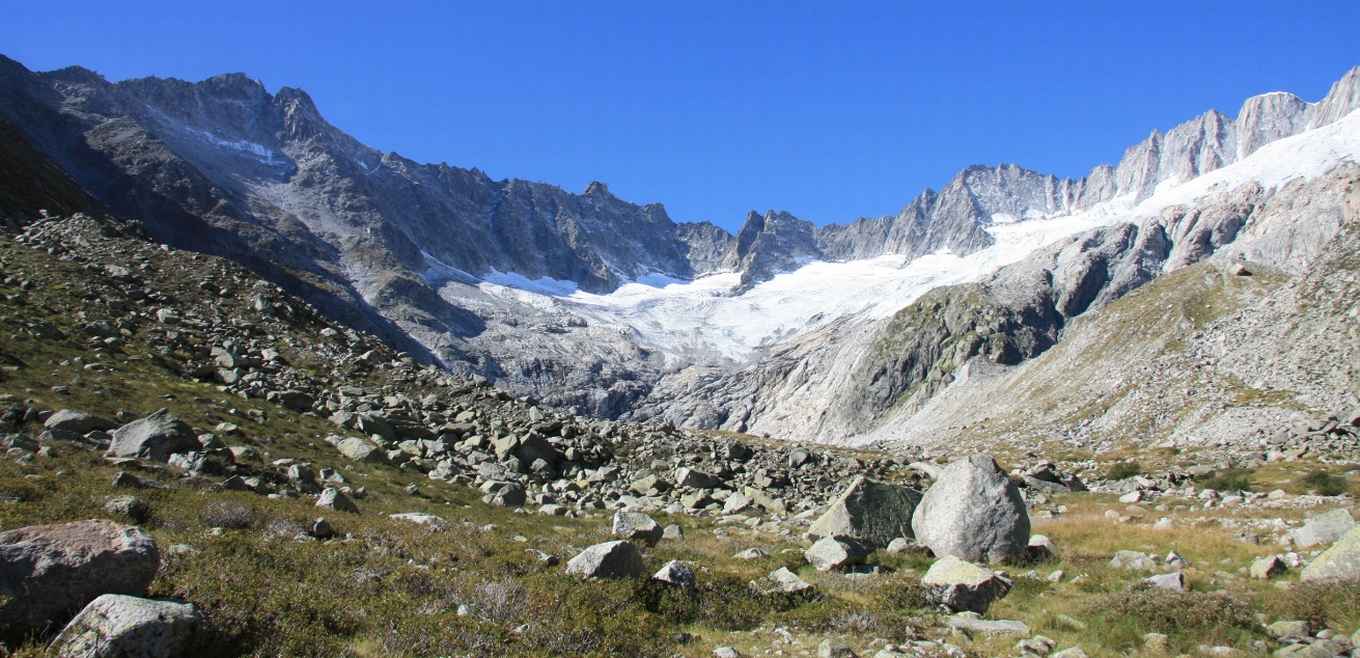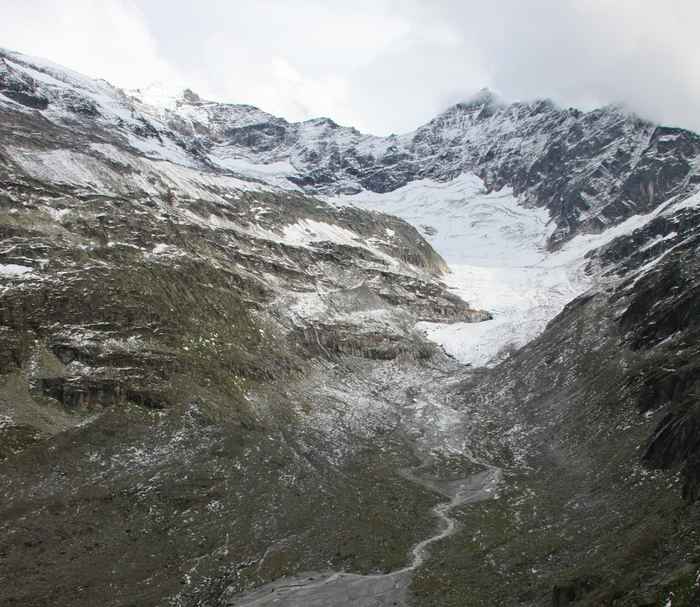Nitrogen is equally well retained in new as in aged ecosystems
18 August 2021

The international team tried to find out whether the retention of nitrogen increases with succession (ecosystem age). ‘We wanted to know what the controlling mechanisms are for the nitrogen retention’, says Franciska de Vries. ‘Many studies have investigated how nitrogen retention changes with ecosystem age, but the plant and microbial controls have not been identified. In particular, the role of soil microbial communities and the build-up of soil organic matter might affect how nitrogen is retained in ecosystems.’
High alpine ecosystems
To understand these mechanisms De Vries and international colleagues did fieldwork in Switzerland and Austria. They sampled the land in front of three melting alpine glaciers. When glaciers melt, they expose the barren material underneath, on which then a succession begins: plants start to grow and soil formation begins. ‘Because there are exact recordings of the position of the front of the glaciers, we knew the exact age of the little ecosystems in front of the glacier’, says De Vries. There is a sequence of ecosystems increasing in age the further you get from the front of the glacier. They are an ideal model system to study questions related to ecosystem succession and age.
The team collected intact soil cores which were fed with ‘labelled’ nitrogen in the lab. Labelled nitrogen means that the nitrogen in the compound is a heavier isotope of nitrogen, which makes it possible to separate it from ‘normal’ nitrogen and follow exactly where the nitrogen went in the soil samples. They found that soil microbes and roots took up the largest part of the added labelled nitrogen.

Surprising results
We have all heard about the impacts of (too much) nitrogen in ecosystems. Understanding the fundamental controls of the retention of nitrogen in ecosystems is important for predicting and mitigating the consequences of nitrogen deposition. De Vries expected nitrogen retention to increase with ecosystem age, because over the years soil organic matter builds up, and plant and microbial communities change.
While many ecosystem properties turned out to change as expected with ecosystem succession and age, researchers did not find that nitrogen retention changed with ecosystem age. De Vries: ‘We found that both plant and microbial properties determined the retention of added nitrogen, as well as soil availability of inorganic nitrogen.’ Although surprising, these finding help researchers understand the mechanisms that underlie uptake of nitrogen in ecosystems. Understanding these mechanisms allows them to better predict which ecosystems will be good at taking up and retaining nitrogen.
De Vries would like to continue her research with similar studies in the Netherlands. ’I would really like to know how well Dutch ecosystems take up nitrogen. And how does this depend on historical nitrogen deposition or other disturbances.’ This knowledge could contribute to policy decisions for protecting or restoring Dutch nature.
Read the article in Journal of Ecology: